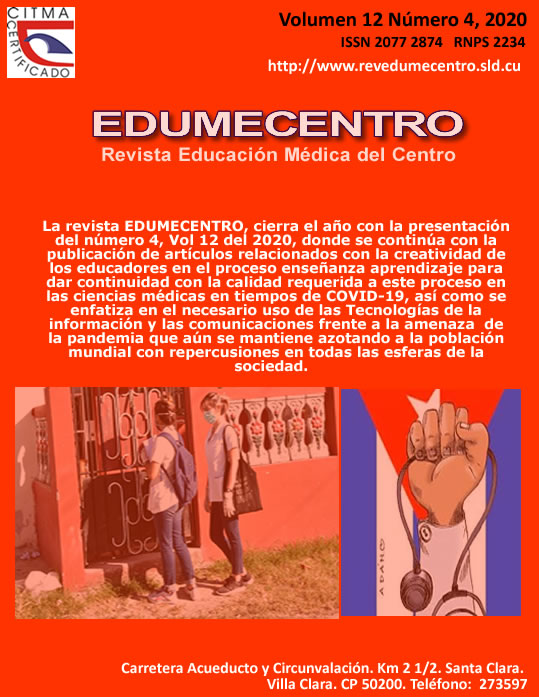Percentiles app: pediatric tool for the assessment and learning of nutritional status
Keywords:
medical informatics applications, information technologies and communication projects, students, education, medicalAbstract
Background: the use of information and communication technologies as tools to design learning resources guarantees a quality teaching process in the university context.
Objective: to design an effective application in the search for pediatric percentiles, for mobile devices with Android operating system and computers.
Methods: a technological innovation and development research was carried out during the 2015-2016 academic year at the Faculty of Medical Sciences of Manzanillo. Theoretical methods were used: historical-logical, analysis-synthesis and systemic-structural; and empirical ones: the survey in the form of an interview. For the design of the application, the Ubuntu 14.04 operating system was used, as tools were used: Android Studio 1.5, OpenJDK 8, Android SDK and Java 8 as programming language. The product was assessed by computing specialists and teachers and by students as users.
Results: the preparation of the application was carried out in three stages: search for precedents, selection of the tool for its preparation and design of the product that included the didactic script and the selection of the prototype and its correction. It was assessed using the Delphi method, and it was very adequate in all the variables requested.
Conclusions: the computing application was useful as an effective alternative method for finding pediatric percentiles. It constitutes a work and support tool for the specialty teaching.
Downloads
Published
How to Cite
Issue
Section
License
Los autores que publican en esta revista están de acuerdo con los siguientes términos:- Los autores/as conservarán sus derechos de autor y ceden a la revista el derecho de primera publicación de su obra, el cuál estará simultáneamente sujeto a una Licencia Creative Commons Reconocimiento-NoComercial-CompartirIgual 4.0 Internacional (CC BY-NC-SA 4.0) que permite a terceros compartir la obra siempre que se indique su autor y su primera publicación esta revista.
- Los autores pueden establecer por separado acuerdos adicionales para la distribución no exclusiva de la versión de la obra publicada en la revista (por ejemplo, situarlo en un repositorio institucional o publicarlo en un libro), con un reconocimiento de su publicación inicial en esta revista.
- Se permite y se anima a los autores a difundir sus trabajos electrónicamente (por ejemplo, en repositorios institucionales o en su propio sitio web) antes y durante el proceso de envío, ya que puede dar lugar a intercambios productivos, así como a una citación más temprana y mayor de los trabajos publicados (Véase The Effect of Open Access) (en inglés).










